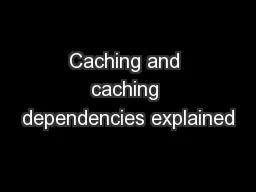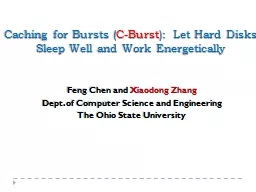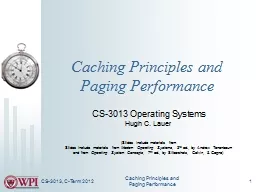PPT-Caching at the Web Scale
Author : giovanna-bartolotta | Published Date : 2017-07-23
Victor Zakhary Divyakant Agrawal Amr El Abbadi 1 The old problem of Caching Disk RAM L 2 L 1 Larger Slower Cheaper Smaller Faster Expensive 2 The old problem of
Presentation Embed Code
Download Presentation
Download Presentation The PPT/PDF document "Caching at the Web Scale" is the property of its rightful owner. Permission is granted to download and print the materials on this website for personal, non-commercial use only, and to display it on your personal computer provided you do not modify the materials and that you retain all copyright notices contained in the materials. By downloading content from our website, you accept the terms of this agreement.
Caching at the Web Scale: Transcript
Download Rules Of Document
"Caching at the Web Scale"The content belongs to its owner. You may download and print it for personal use, without modification, and keep all copyright notices. By downloading, you agree to these terms.
Related Documents














